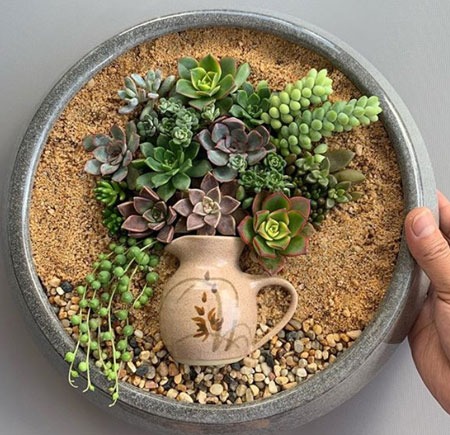Living in a city apartment often comes with the downside of not having a backyard or garden. However, if you have a balcony, you can still make the most of it. Balcony gardening offers a wonderful opportunity to cultivate plants in pots or planters, adding a touch of greenery to your space. Whether you opt for delicious fruits or vibrant houseplants, there are plenty of low-maintenance options to choose from. Not only can you enjoy the beauty of your own little garden, but growing your own vegetables can also help you save money on grocery expenses.
Before diving into balcony gardening, it's important to consider a few factors. Firstly, assess whether your balcony can handle the weight of your potted plants. If possible, opt for lighter plastic or resin planters instead of heavier clay pots. Additionally, take into account the exposure of your plants to weather conditions. It's a good idea to create wind protection, such as windscreens, or select plants that can withstand strong gusts during windy weather.
#1. Sweet Alyssum

Source: Carmen K. Sisson | Photographer – PhotoShelter
How to grow:
- Maintain full sun for your lovely Alyssum. Although they may live in some shade, plants thrive in full light.
- Water Alyssum occasionally. Make sure the soil dries out fully between waterings and give the plants one inch of water every week.
- Plants should be deadheaded to promote growth.
#2. Herbs
Source: Access Garden Products
How to grow:
- Herbs thrive in full sun and light, well-drained, moist-retentive soil that has been heavily amended with organic matter.
- Plant seeds of plants that go to seed quickly, like coriander and dill every two weeks during the spring and summer.
#3. Strawberries
Source: Balcony Boss
How To Grow:
- Although they can tolerate some shade, strawberries thrive best in full sun and yield the tastiest fruits.
- They prefer healthy, well-drained soil that is a little acidic.
- It is best to plant them on raised beds, which offer greater drainage and deeper root systems when the soil is heavy or poor.
#4. Succulents And Cacti
Source: Melodrama
How To Grow:
- Succulents are perfectly capable of surviving in homes with low relative humidity levels.
- They don’t need much fertilizer or water, but they do need lots of sunshine.
- A majority of succulents and cacti opt for sandy soil that drains well.
#5. Verbena
Source: myGarden.com
How To Grow:
- Compost-amended soil is ideal for verbena, although it may grow in a variety of soil types as long as there is adequate drainage.
- These dependable, simple-to-grow flowers love the sun.
- Root rot may result from clay or compacted soil. Although it can handle some drought, it thrives in soil that is relatively damp. Root rot or mildew can be caused by too much water.
#6. Lavender
Source: Flower Council of Holland
How To Grow:
- For optimum growth, lavender requires full light and well-drained soil.
- They could flourish in midday shade in hot summer areas.
- Avoid adding organic matter to the soil before planting lavender since it prefers low to moderate soil fertility. Lavender thrives in neutral to slightly alkaline soils.
#7. Tomato
Source: Justagric
How To Grow:
- Tomatoes should be planted deeply so the first set of leaves is just visible above the soil line. firm in, then thoroughly water.
- Tomatoes prefer the hottest, sunniest location that is wind-protected. To ensure that the soil is rich, free-draining, and moisture-retentive before planting tomatoes, dig a good amount of garden compost into the earth.
#8. Begonia Pendula
Source: Bakker.com
How To Grow:
- Begonias should be grown in dappled sunlight to partial shade in multipurpose compost free of peat.
- Plant tuberous begonia tubers in the spring. Begonias should only be planted outside in May when no there are no longer further frosts.
- Weekly feedings using a high-potash fertilizer like tomato feed and daily watering
#9. Fuchsia
Source: Laidback Gardener
How To Grow:
- As long as you provide them with sunlight, well-drained soil, and sturdy reliable pots, fuchsias are happy to grow.
- Feed and deadhead them, and keep the soil wet for the greatest results.
- Prune tough fuchsias hard in the spring. To promote more blossoms in fragile fuchsias in the spring, pinch off the stems.
#10. Pansies
Source: Pinterest
How To Grow:
- Although they like full or partial sunlight, pansies require lower temperatures to grow. The optimal planting location will receive early sunlight but will stay out of the midday sun.
- Pansies bloom profusely in well-drained, fertile soil that is rich in organic materials.
- You should consider airflow and drainage while selecting a container for pansies.












